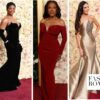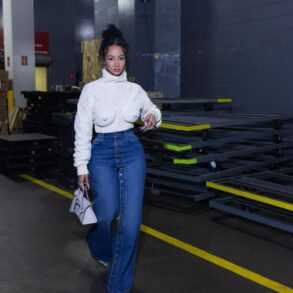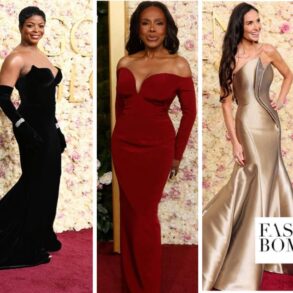In recent years, supported by some unexpected traveling companions — including the most prestigious fashion designers, Nordic environmentalists, believers in the benefits of teleworking, and fans of the movie Barbie — Birkenstock sandals have gone from being mere orthopedics to the footwear that sums up the zeitgeist of the times we’re living in.
It’s undeniable that Birkenstocks — the most famous “ugly” sandals in the world — are experiencing a golden moment. After almost 250 years of existence, the German brand is about to take a giant step: according to a document published by the U.S. Securities and Exchange Commission (SEC), it’s set to be listed on the New York Stock Exchange. Upon going public, it’s expected that the firm will raise about $1.6 billion, with shares ranging from $44 to $49. And everything seems to indicate that the family holding company of Bernard Arnault — the president of the LVMH luxury empire, which has already invested in Birkenstock — will acquire an important part of these securities.
Fernando Aguileta de la Garza, an expert in fashion branding, is clear about what he believes is the secret to the brand’s success. “Prioritizing the customer and their comfort is the best bond between brand and user. I think that [Birkenstock’s] adventure in the stock market will work, because they can guarantee the brand’s promise over time. And, [as the company enters] the market, the timing is perfect: [consumers] in the 21st century seek and choose to feel comfortable without losing style (whatever that may be). I believe that Birkenstock succeeds, because it appeals to the universal, without complications.”
De La Garza adds that “Louis Sullivan — the founder of modernist architecture — liked the phrase ‘form follows function.’ This approach can be perfectly applied to design in general, but in Birkenstocks, that idea takes on a broader meaning. The design gravitates towards comfort. Fashion may be decorative, but it’s also [about] form. The particular shape of the sandals is the best hallmark of the brand: orthopedics turned into an esthetic [design], the latest direction in fashion.”
A story that begins in 1774
But how have these sandals managed to conquer all types of audiences across the planet? Well, it all started in 1774, when Johann Adam Birkenstock set up a shoe store in the town of Langen-Bergheim, in the German state of Hesse. A leap of almost 100 years takes us to his grandson, Konrad Birkenstock, who was a shoemaker based in Frankfurt. In 1896, he had the visionary idea of manufacturing contoured insoles. His innovation provided a flexible arch, which could be inserted into factory-produced shoes. The notion came at the right time: by the end of the 19th century, German spa culture was at its peak. Wealthy Europeans and Americans flocked to Germany for relaxation treatments, while Konrad’s new shoes promoted foot health. As an orthopedic company, Birkenstock featured designs that were based more on function than form. And, in 1932, Konrad’s son Carl created a training program for podiatry and specialized footwear, which doctors promoted as the “Carl Birkenstock system.” A year later, he created the brand’s first sandal: a cork-soled model, baptized as “the Madrid.”
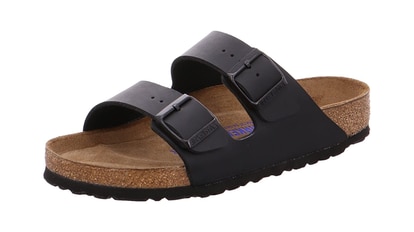
The footwear of environmentalists, hippies and young people of the counterculture
By chance, a Californian woman of German descent, Margot Fraser, took a vacation to Germany. Her feet hurt and she discovered the extreme comfort of these sandals. So, she suggested that Carl take them to the U.S.: it was 1966 and there was nothing like them there. Upon her return to California, she managed to sell them in some health food stores, meaning that the Birkenstocks quickly attracted the attention of environmentalists, counterculture youth and hippies. They were still a somewhat residual shoe, but soon, something more than their comfort was associated with them: they began to be worn by people who were against nuclear weapons, processed foods and the sexualization of women. Birkenstocks had become the footwear of the opposition.
By the 1970s, the brand launched its two most iconic models: the Arizona sandal and the Boston clog. According to Forbes, they remain the company’s best-selling styles today. And, as they were still associated with hippies, the sandals had a brief moment as a subversive fashion statement in the 1990s, with the emergence of “grunge” fashion, as noted by The Wall Street Journal.
Fashion surrenders at your feet
In 1990, Kate Moss posed while wearing a pair of Birkenstocks for The Face magazine, which was considered to be the British bible of alternative style. And, in 1992, Marc Jacobs enhanced his famous “grunge” collection at Perry Ellis (which resulted in him being dismissed from the company) with the Arizona model. These were the Birkenstocks’ first steps on their journey to becoming an essence of popular fashion.
The turn of the century marked another turning point for the company. In 2002, Carl Birkenstock passed the baton to his sons: Christian, Stephan and Alex. As often happens when you go from a single head to three heads, some tensions arose: the brothers had different visions. Consequently, the growth rate stagnated at two percent annually, according to The Cut. However, the situation began to change in 2009, when Christian hired Oliver Reichert as an advisor. He became co-CEO three years later and remains CEO today. His profile fits the practical approach of the founder of Birkenstock: he isn’t interested in design. “I don’t give a shit about fashion,” he once scoffed, during an interview with fashion critic and journalist Cathy Horyn. 2012 was a very important year, because the Birkenstock family handed over control to external administrators such as Reichert (although they maintained ownership). This move would catapult the corporation’s image to a level that they could never have anticipated.
The same year, designer Phoebe Philo — who was then the creative director at the French brand Céline — released a series of sandals that were very similar to Birkenstocks in her Paris show. She decorated them with fine blue, white, black and red mink lining. This sparked a global fever for the style, while putting the much more affordable (and hairless) Arizonas in the spotlight. At the time, when the frenzy hit, The Cut reported that the brand was producing 10 million sandals a year.
Philo’s twist gave very favorable publicity to the very predictable Birkenstocks. Suddenly, all customers wanted was to buy a pair of Arizonas and pair them with a long dress — a style that had become the new minimalist chic on the trend-savvy circuit. However, Birkenstock (which has always maintained production at its own factories in Germany) wasn’t entirely prepared to take advantage of all that demand, which would continue to grow in the following years. In the decade since then, Birkenstock sales have more than quadrupled, with the Arizona sandals leading the way, according to data from CBS News.
In 2015, the brand launched its EVA sandals — a new version of its classic cork-and-leather style — this time made with a lightweight, waterproof synthetic material, composed of ethylene-vinyl acetate. The EVAs were also less than half the price of the original Birkenstocks, at only about $40. And, by 2018, the EVAs already represented 15% of the 25 million pairs of shoes that the company was manufacturing on a yearly basis. That year, the company’s sales reached $800 million.
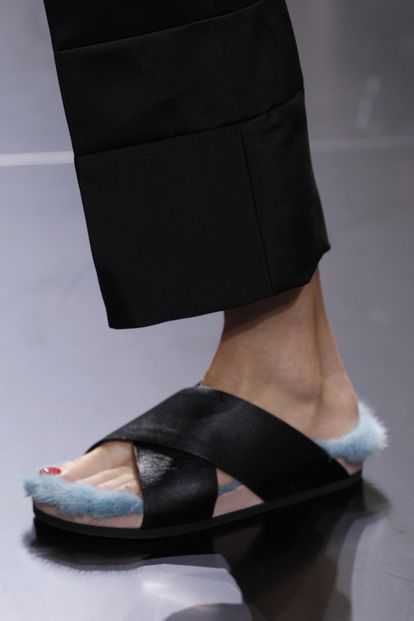
The pandemic and another unexpected impulse
The pandemic gave the company another boost that they weren’t counting on. With a new shift towards working from home, even greater interest in the brand was sparked. “If the pandemic brought anything good, it’s that it forced us to ask ourselves what’s really important, what really matters in our lives,” Birkenstock CEO Oliver Reichert told The Wall Street Journal. Working from home freed many of us from social constraints — something that paired well with Birkenstocks.
Thus, overnight, it became the number one shoe. Online demand went crazy. The massive increase in sales and managing global demand under pandemic conditions presented serious challenges. The German Birkenstock factories struggled to clear a backlog of almost a million pairs, pushing workers to the limits of their capacity. A production shutdown of almost two months due to lockdowns didn’t help, either. But, despite all of this, if Birkenstock managed to clear $750 million in 2019, with profits of about $150 million (according to data from FashionNetwork.com), the company’s revenues and profits in 2020 managed to stay more-or-less the same, despite a shrinking economy. Lyst — a global fashion search platform, something like the Google of fashion — named the Arizona sandal as the most popular shoe in the world in the second-quarter, creating a frenzy for them. Searches increased by 225% in that period, with Birkenstocks being sold out at many retailers.
Lyst noted another reason that boosted the brand’s reach: “In recent years, numerous collaborations with brands — such as Valentino, Rick Owens and Proenza Schouler — have helped the sandal develop a famous following, with influential celebrities such as Kendall Jenner, Gigi Hadid, Leonardo DiCaprio and Usher among its followers.” Curiously, the brand prides itself on not having an office in Hollywood — it doesn’t send free samples of its shoes to any celebrities. If someone wears them, it’s because they bought them. In today’s environment, this is a very disruptive idea.
Indeed, several fashion brands such as Rick Owens, Jil Sander and Proenza Schouler have designed avant-garde versions as part of Birkenstock 1774, a line of collaborations named after the year that the German brand was born. And then, there are even bigger names that have launched joint collaborations with Birkenstock — such as Dior or Manolo Blahnik — but Reichart boasts of rejecting the majority of proposals that come to him. He has said no, for example, to Birkenstocks being associated with brands like Supreme or Vetêments, because on the one hand, it seemed to him that they only wanted to print his company logo… and, on the other hand, he joked that he “doesn’t want to die from success.”
The rage over Birkenstocks has spread to many other brands of all price ranges. In the same Lyst ranking, the ultra-luxury version by Brunello Cucinelli also appears in the men’s ranking: with a price more than seven times that of a pair of Birkenstocks, it saw a 41% increase in searches in that same period. In 2022, the Boston clog went viral on TikTok, selling out online after being worn by celebrities such as Kendall Jenner. As reported by Business Insider, the shoes were in such high demand that some resellers began charging double the retail price. Birkenstock launched a tongue-in-cheek ad campaign in The New York Times called “Ugly for a Reason.”
Last year, 30% of Birkenstock customers were baby boomers, while 31% were millennials, according to the demographic data it provided to the U.S. Securities and Exchange Commission. And its sales haven’t stopped growing: revenue from the Arizona model increased by 24% between 2018 and 2022. Today, Birkenstock fiercely protects its entire production operations in Germany, churning out 80,000 insoles every day, all made from a Portguese cork blend and a secret mixture made of jute, cork, latex and leather, which is heated and then molded.

Birkenstocks are political
The Birkenstock Group may not want to change too much, but it does need to keep the brand fresh… even though it depends on being predictable. Not an easy ask. For this reason, the company has begun to open design studios in places like New York City or Tokyo, with the idea that local independent designers and artists can propose their own visions. It’s also undeniable that the boost from Greta Gerwig’s movie Barbie has been a bombshell for the brand.
Birkenstocks appear in the film at a crucial moment, in which Barbie must make a decision that will change her life. Margot Robbie’s character is faced with a Matrix-inspired choice: she must either take the red pill or the blue pill. The pink heels symbolize the ignorance of Barbieland, while the cold, real world materializes in the form of ugly Birkenstocks. Sandals are the emblem of an unpleasant — albeit necessary — self-realization. Barbie ends the film reconciled with life and with a pair of Birkenstocks at her feet, specifically, the pink nubuck leather Arizona Big Buckle. A few weeks ago, EL PAÍS wrote that “the company’s sales [skyrocketed] after Robbie wore Birkenstock Arizona sandals (pink, of course) in a scene from the film directed by Greta Gerwig. In fact, Google searches for these shoes skyrocketed between July 20 and 21, the dates of the film’s release in several countries. Last year, the German company’s revenue rose 29% to around $1.31 billion, with adjusted profits of $431.5 million. Birkenstock has been investing in expanding its production centers in Germany, especially a new factory in Pasewalk, a town north of Berlin.”
Proof of the “iconization” of these sandals is also due to the fact that they have become a political adjective. In 2003, the American press began to refer to Democratic presidential candidate Howard Dean’s voters as “Birkenstock liberals,” in reference to politician’s preference for these sandals. Since that moment, Birkenstock has become a reference for social and ideological classification. As The New York Times published at the time, shoes can reveal a lot about someone and indicate where they come from and where they would like to go — even telegraphing their electoral inclinations. American popular culture has attributed the use of German orthopedic sandals to a progressive spirit. While there is no data to support this relationship — and while true Birkenstock wearers can come from all political stripes — the stereotype of “wearing Birkenstocks, munching granola and driving a Volvo” is recurrent in the country. They’re also the sandals that Representative Alexandria Ocasio-Cortez wears in her free time and Gwyneth Paltrow in her daily life.
In Europe, the connotation is different, but it also paints a portrait: Birkenstocks are associated with Nordic cultures and are the footwear par excellence from Germany to Denmark, passing through the Netherlands, Sweden or Norway, especially in the summer months. Those who wear them appreciate their durability. They’re also associated with a distance from fast fashion and a concern for the environment.
“There’s something about this shoe that’s universally understood and that makes it so funny,” noted Jason Reitman — director of the 2006 satirical film Thank You for Smoking — in The New York Times that same year. “Nothing says, ‘I want to tell you how to live your life,’ more than Birkenstocks.” Perhaps that’s why The Guardian has dubbed them the most “woke” sandals in existence.
Sign up for our weekly newsletter to get more English-language news coverage from EL PAÍS USA Edition
This post was originally published on this site be sure to check out more of their content.



